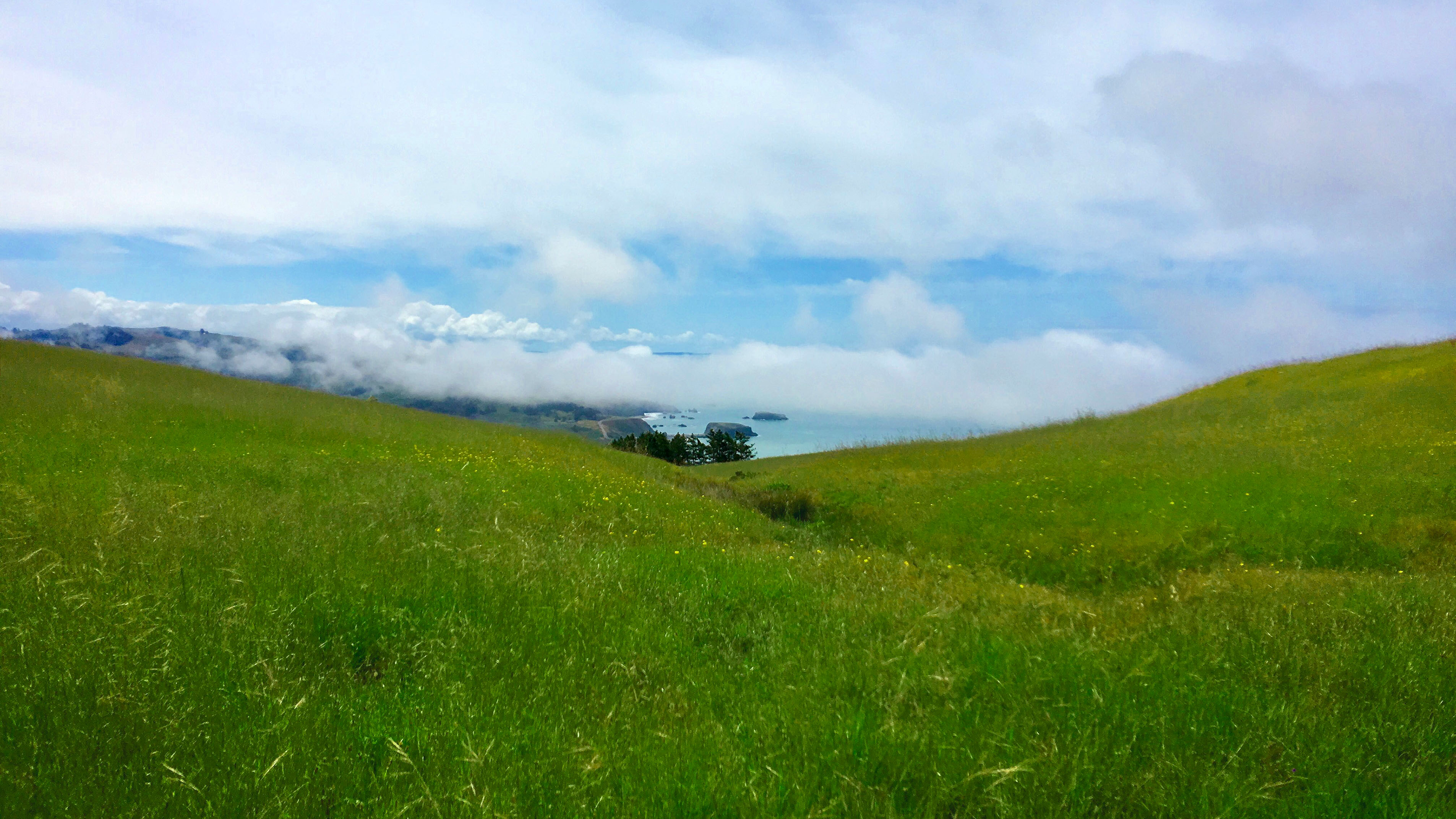Prairie

Grasslands
Grasslands perform essential services necessary to support life. Grasslands contribute to human well-being and provide benefits that extend to local, regional, and global communities, including:
- Food and Agriculture: Humans owe the development of our civilization to grasslands, which are the source of species that are staples in our diet, and enabled the development of agriculture and domestication of livestock.
- Carbon Storage: Grasslands remove more carbon from the atmosphere than any other ecosystem in America. Grasses have an enormous capacity for carbon storage. Soil organic matter of coastal prairies is approximately 50% carbon.
- Biodiversity: California’s relatively intact grasslands are reservoirs of biodiversity containing about 40% of California’s native plant species.
- Pasturage: Coastal prairie plants are considered excellent forage and continued to be so after reportedly over 100 years of grazing use. Average forage production can exceed 3,000 lbs/acre/year.
- Water Quality: Deep-rooted perennial grasses capture, filter and store water, and anchor the soil in place throughout the year long after annuals die. Native perennial grasses are used in Mediterranean vineyards and orchards to prevent erosion, suppress weeds, and maintain nutrients in the soil without competing for irrigation water during the drought of summer (Volaire, et al. 2009).
- Aesthetics and Recreation: Grasslands provide sweeping views, gorgeous wildflower displays, and wonderful hiking opportunities.
- Habitat: Grasslands are open habitats that provide necessary food and shelter for many birds and animals.

Coastal Prairies
- “Prairie” is a French word derived from Latin word for “meadow.” It was first used in North America by French trappers in the 1600s to describe the great plains prairies of the Midwest.
- “Coastal prairies” mostly occur in areas where plants obtain some moisture from fog. The term “coastal prairie” was probably first used to describe California’s coastal grasslands in 1957.
- California’s coastal prairies are distributed from southern California to Oregon usually within 100 km of the coast and under 350 m in elevation.
- The main types of landforms associated with California coastal prairie are coastal marine terraces, coastal bluffs, hillside slopes, uplifted grassy bald hills and lowland grasslands.
- Coastal prairies, like other types of grasslands, are sustained by disturbances that prevent invasion by shrubs and trees (e.g., fire, trampling, digging, wallowing and grazing).
- California tribes regularly burned coastal grasslands to improve the quality and quantity of grassland resources for their use. Indigenous burning increased the area of coastal prairies and other grasslands relative to scrub and forest habitats throughout California.
- Coastal prairie community types are commonly named for the dominant plant, usually a grass species.
- The dominant grass species are usually accompanied by a set of species, an “herbaceous alliance,” that grow under the same environmental conditions.
- Examples of names of coastal prairie vegetation types include California oat grass prairie (Danthonia californica Herbaceous Alliance) and tufted hairgrass meadows (Deschampsia cespitosa Herbaceous Alliance).
- In prairies, native wildflower species (forbs) outnumber grass species and account for most of the plant diversity.
- Coastal prairies in California support the highest plant diversity of any grassland in the United States.
- During surveys in Sonoma and Marin counties, botanists found 30-70 plant species in 10 m x 10 m plots. California coastal prairies support 80 endemic plants. /li>
- Coastal prairie grasslands types (over 34 alliances) represent 30-50% of the diversity of vegetation types occurring in Sonoma and Marin counties.
- Grassland-obligates are species that may or may not occupy grasslands for their entire life, but depend on grassland resources for some aspect of their reproduction and survival. See individual plant and animal species accounts on this website for information regarding their dependence on grassland habitats.